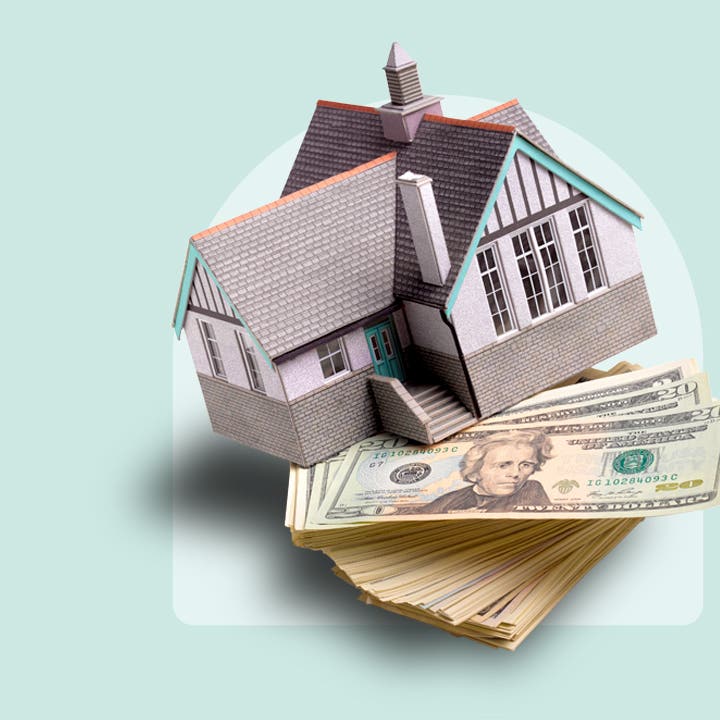Image: Getty Images; Illustration: Bankrate
More relief for home equity rates in the latest week. The $30,000 home equity line of credit fell one basis point to 7.81%, according to Bankrate’s national survey of lenders, its lowest level in two years. Meanwhile, the benchmark 5-year $30,000 home equity loan dropped three basis points to 7.99%, also at a two-year low.
Where might home equity rates go in the near term? Karri Noble, senior vice president of home equity operations at loanDepot, notes that the federal government shutdown has created a lot of uncertainty in the market. “What’s going to happen ahead is very unknown at this point,” Noble says. “Normally, I would have an idea of what I think the future holds. But a lot of us have no idea.”
| Current | 4 weeks ago | One year ago | 52-week average | 52-week low | |
| HELOC | 7.81% | 7.84% | 8.61% | 8.18% | 7.81% |
| 5-year home equity loan | 7.99% | 8.13% | 8.41% | 8.30% | 7.99% |
| 10-year home equity loan | 8.17% | 8.28% | 8.52% | 8.45% | 8.17% |
| 15-year home equity loan | 8.13% | 8.18% | 8.44% | 8.37% | 8.10% |
Note: The home equity rates in this survey assume a line or loan amount of $30,000.
What’s driving home equity rates today?
Both HELOC and home equity loan rates have declined substantially from their 2024 highs. Rates are being driven primarily by two factors — the first one is the Federal Reserve’s actions. In particular, the Fed impacts the cost of variable-rate products, like HELOCs. After cutting rates by a quarter point at its September and October meetings, the central bank may still lower borrowing costs one more time this year.
What could complicate matters for the Fed is the government shutdown, which is the longest in history. The work stoppage has not only delayed crucial economic data, like the monthly jobs report, but it has also created greater economic uncertainty.
Add to that lender competition, promotional offers and underwriting standards, all of which also have an impact on HELOC and home equity loan rates, says Stephen Kates, senior analyst at Bankrate. But beyond rates, “Some banks offer additional perks or services that may benefit borrowers,” he says. “Shopping around and comparing multiple offers is the best way to secure a competitive rate and find a banking relationship that aligns with your financial goals.”
Current home equity rates vs. rates on other types of credit
Because HELOCs and home equity loans use your home as collateral, their rates tend to be much less expensive — more akin to current mortgage rates — than the interest charged on credit cards or personal loans, which aren’t secured.
| Credit type | Average rate |
| HELOC | 7.81% |
| Home equity loan | 7.99% |
| Credit card | 19.87% |
| Personal loan | 12.25% |
| Source: Bankrate national survey of lenders, Nov. 12 | |
While average rates are useful to know, the individual offer you receive on a particular HELOC or new home equity loan reflects additional factors like your creditworthiness and financials. Then there’s the value of your home and the size of your ownership stake. Lenders generally limit all your home loans (including your mortgage) to a maximum of 80 to 85% of your home’s worth.
Keep in mind: Even if you’re able to secure a favorable rate from a lender, home equity products are still relatively high-cost debt.

Unlock your home’s value
A fixed-rate home equity loan offers a lump-sum payout and a predictable repayment schedule.
Explore offers
Home equity trends
- On average, mortgage-holding homeowners’ equity stakes have risen 142% nationwide since 2020, according to a Bankrate study on states with the most and least home equity gains.
- As of the third quarter of 2025, HELOC balances rose to $422 billion, $105 billion above the low reached in the first quarter of 2022, according to the Federal Reserve Bank of New York.
- Lenders expect year-over-year growth of almost 10% for HELOC debt in 2025 and 7% for home equity loan debt, according to the Mortgage Bankers Association’s 2025 Home Equity Lending Study.
- Seventy percent of homeowners say a HELOC helps them boost financial confidence and manage expenses, according to TD Bank.
Why we ask for feedback
Your feedback helps us improve our content and services. It takes less than a minute to
complete.
Your responses are anonymous and will only be used for improving our website.
Help us improve our content
Read the full article here









